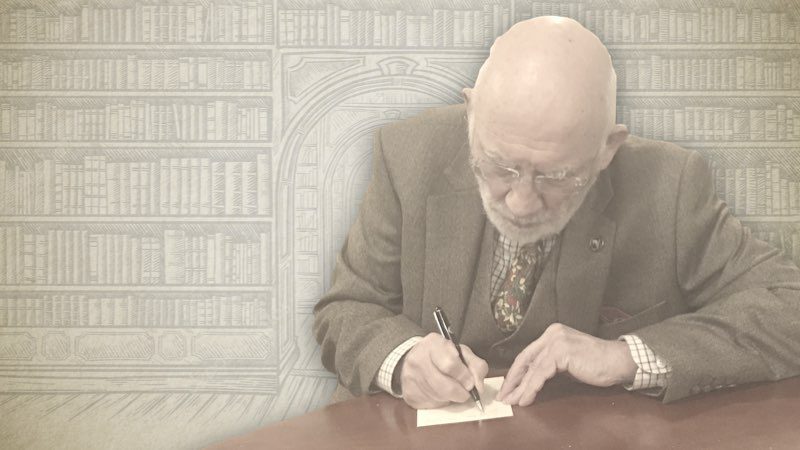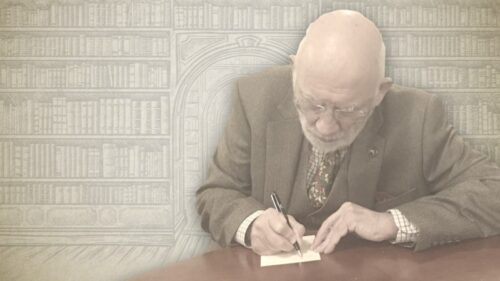
Phil Johnson On Christ Being Made Sin Only Figuratively
Following Theological Fashions
Our modern theology has apparently become a matter of fashions. In my youth, Christians kept to their theological opinions closely. Whether a Plymouth Brother, Particular Baptist, Wesleyan Methodist or an Evangelical Anglican, they remained true to their affiliations all their Christian lives. Nowadays, Christians seem to be changing their theological bent regularly. I have friends who have adopted one supposedly modern fad after another, going through Hyper-Fullerism, Hyper-Calvinism, New Covenant Theology, New Perspectives, Dispensationalism and other old warmed up errors within a few years. I have even received letters from irate brethren scolding me for not keeping up to date with new theological trends myself.
Being made sin and being made righteous refers to facts not fictive pictures
When browsing through magazines, web-pages, chat-groups and blogs, one gains the impression that it is now fashionable to discuss the limitations of the Manhood of Christ and His alleged cooperation in a gigantic hoax whereby the Father and the Son worked out what their proponents call a ‘forensic’ method of freeing sinners from the wages of sin without really doing it in practice. The text they build their opinions on is 1 Corinthians 5:21. “For he hath made him to be sin for us who knew no sin; that we might be made the righteousness of God in him.” We must note here that ‘forensic’ means legal, judicial or a matter of form rather than a matter of fact. The term also means disputative, argumentative or rhetorical. Legal has to do with the works of the law. Rhetoric has to do with declamatory skills, or lack of them. Neither has to do with salvation by grace. “By grace are ye saved through faith; and that not of yourselves: it is the gift of God. Not of works, lest any man should boast” (Eph. 28-9). Obviously, those who read these words will rightly say that Christ’s putting Himself under the law for our sakes made Him legally triumphant. This is true but in Christ’s love for the elect, His sacrifice was not carried out for His own legal status but because, once having paid the penalty of sin vicariously and sin and all need for further legal action were blotted out, He could make us partakers of His triumphs through grace alone. The time of condemning law was over. The time of saving grace had begun. No sinner can be saved by law. Sinners are saved by grace. One man through his breaking God’s law, brought legal condemnation on all men. One Man through being made sin for the elect’s sake and being condemned as sin was able, by an act of pure grace, to make His Bride partakers of His triumphs. He thus freed His elect from all legalities. Paul says in Romans 5:17, “For if by one man’s offence death reigned by one; much more they which receive abundance of grace and of the gift of righteousness shall reign in life by one, Jesus Christ.”
Legal rhetoric is not the gospel of grace
Those who make salvation a mere piece of legal rhetoric get into all kinds of difficulties as witnessed by a blog I visited the other day run by a person named Phil Johnson. The diarist started off on a fine note by testifying to the sinlessness of Christ. He was a Lamb without spot and blemish. He also denied the Fullerite teaching that Christ was made a sin-offering but not sin itself showing how the Fullerite and the modern Docetist were dodging the issue. But when he came to the issue of Christ being made sin, he dodged it himself by arguing that Christ merely took upon Himself our sin and guilt symbolically, or, as Fuller would say, metaphorically. Johnson tells us that in this gospel fulcrum we are faced with imagery and not with fact. He describes vicarious punishment and substitution in this figurative way, arguing that his is the only interpretation possible, claiming, “He was made sin by imputation. He was made sin for us, on our behalf, on account of our sin. He became, in a figurative sense and in a judicial sense, the embodiment and the symbol of our wickedness.[1. This expression, repeated in different blogs can be found in Johnson’s Sword and Trowel article Justification: Defending the Heart of God (undated in web). See also Pyromaniacs of Aug. 4, 2006. In Pyromaniacs 14. Sept, 2009, Johnson sums up statements of previous years from his pen on imputation and justification but does not refer to any ‘figurative’ aspect. This could mean he either is dodging the issue or he has learnt to challenge this interpretation. Either way this should have been explained in his Pyromaniacs article Active Obedience Revisited.]” Johnson gives ‘proof’ of his symbolic, figurative, judicial interpretation by quoting Isaiah 53:6, “All we like sheep have gone astray; we have turned every one to his own way; and the LORD hath laid on him the iniquity of us all.” Now where is the merely symbolic, figurative or judicial in this statement and its parallel 2 Cor. 5:21? Both verses say the same thing and mean the same thing and both verses say what actually happened void of all camouflage through unexplained metaphors. To emphasise that he is talking merely metaphorically, Johnson quotes Gal 3:13 as another ‘parallel expression’, “Christ hath redeemed us from the curse of the law, being made a curse for us.” How can one, however, take this to be a metaphorical statement. If being redeemed from the curse of the law is merely a figure of speech, a piece of imagery, what then does it mean? Johnson merely gives us the puzzles, he cannot solve them.
Christ’s death is no fancy picture of who knows what
Knowing that God’s ways are pure righteousness and He knows no deceit, it must be considered blasphemy for anyone to claim that the atonement was a mere formal hoax to arrange some kind of legal, forensic jugglery. This is sadly common amongst sinful men but certainly not part of the Character of the triune God. God’s ways are past finding out but when God made Christ to be sin for us, He certainly identified His Son as embodying sin and punished Him thus as the representative Sinner. Christ knew no sin but He certainly knew our sins and suffered under them in His agonising punishment. He certainly carried our sins. The Bible is even stronger in its condemnation of our vicarious substitute, Christ. He was made sin itself as if He had sucked all the sin of all the elect into Himself and was so full of it, He was called ‘Sin’ itself because sin was no where else. This was the method prophesied by Daniel that Christ would put an end to sin. Then the Father turned His face from His Son because He cannot look upon sin and the Son cried out in agony, “Father, Father, why hast Thou forsaken me!”
After merely dodging the issue on sin and not even trying to explain what Christ being made sin actually (as opposed to symbolically) means Johnson says:
“Paul is actually describing a double imputation in this verse. In other words, the imputation goes both ways: the believer’s guilt imputed to Christ, and Christ’s righteousness reckoned to the believer. Paul deliberately makes precisely that parallel, and though some have already quibbled about calling this an “exchange,” that is exactly what Paul is saying.”
We do not quibble about so beneficent an exchange but we do quibble about what was actually exchanged. If Christ’s becoming sin was merely metaphorical, so is the elect’s becoming righteous. Then we still do not know what benefit this exchange is to us. If Christ did not put an end to our sin by taking it upon Himself and dying for the deathly wages we earned, then we are actually (not metaphorically) still in our sins. For Johnson, Christ triumphed over a sin which was a mere symbol for something unknown and the sinner has been given a symbol of righteousness which is not righteousness itself but merely a figure of speech for something nobody knows. This is pure scepticism. The proof of what Christ did for us at Calvary is seen in His resurrection. When the saints are resurrected, they will take part in His resurrection benefits. Sin is abolished for all those in union with Christ so there will be no sin in eternity. Where no sin is there is righteousness. There is no symbol, figure of speech or metaphor here. Christ has made Heaven the place of ‘just men made perfect’. ‘Just’ here means truly just, that is, perfectly so and not merely metaphorically so. Indeed, the Bible is full from start to finish of the promises of God that He will make for Himself a perfect people. All these promises are ‘Yea and Amen’, they are true promises concerning concrete facts. Real people are made really perfect. This is the objective, concrete, real and true outcome of the objective, concrete, real and true fact that Christ became sin for us. Any talk of metaphor here is blather, twaddle and balderdash and do not the Scriptures tell us to “Shun profane and vain babblings: for they will increase unto more ungodliness?” (2 Tim. 2:16).
George Ella
——————————————
George M. Ella is a historian, author and biographer. His writings may be accessed at the online archived, ”Biographia Evangelica”.
George M. Ella, born February 1939 in Yorkshire, England, has lived most of his life on the European Continent. He is a retired Senior Civil Servant formerly employed in teaching, post-graduate teacher-training, chairing examination boards and curricula work. He holds degrees from London, Hull, Uppsala, Essen, Duisburg and Marburg universities with doctorates in English Literature and Theology. Dr. Ella has written regularly since the seventies for a number of magazines and newspapers and published numerous books on Church History, including biographies of William Cowper, William Huntington, James Hervey, John Gill, Augustus Montague Toplady, Isaac McCoy and Henry Bullinger besides works on doctrine and education. He is currently finishing the third volume of his series 'Mountain Movers'; a biography of John Durie; a work on Law and Gospel and further study material for the Martin Bucer Seminar. Dr. Ella is still internationally active as a lecturer and is a Vice-President of the Protestant Reformation Society. He is keenly interested in missionary work and has written on the spread of the Gospel amongst the Same people of Lapland, the people of India and the Native Americans. This present volume follows Dr. Ella's 'The Covenant of Grace and Christian Baptism', also published by the Martin Bucer Seminar. George Ella is married to Erika Ella, nee Fleischman, a former government administrator, and they have two sons Mark (41), Director of a Polytechnic College in Bremerhaven and Robin (39), Leading Senior Physician in a newly-built Geriatric and Psychiatric clinic in Dessau.
George Ella on Doctrinal Matters
George Ella's Biographical Sketches




